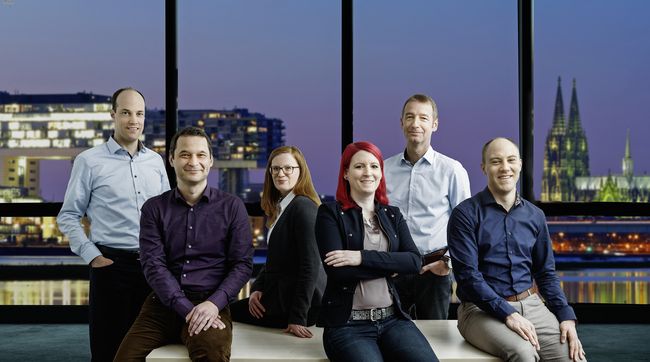Asia
EMEA

LANXESS Canada Contacts
Contact our Sites in Canada
Media Inquiries
General Inquiries
Please click here to e-mail LANXESS Canada with product inquiries and general requests.
Global Press Releases
2019-04-01
LANXESS intensifies focus on electromobility
- Great potential for polyamides and polybutylene terephthalates in the electric powertrain
- Focus on batteries, motors and inverters as well as on charging systems and elements of the charging infrastructure
- Substitution of conventional materials such as die-cast aluminum
Cologne – The specialty chemicals company LANXESS sees great application potential for its technical plastics under the brands Durethan (polyamide) and Pocan (polybutylene terephthalate) in the New Mobility growth market. This is why the High Performance Materials business unit founded the “e-Powertrain team”, which is geared to the needs of the global automotive industry and supports external partners throughout the entire development chain for components of electric vehicles and the associated infrastructure. This support includes materials that are tailor-made for specific customers and applications as well as processing development and engineering services for component design such as CAE simulations, moldflow calculations and finished product inspections.
The new group is the central point of contact for electromobility development projects and inquiries from all regions. “We coordinate knowledge exchange among our application and processing development centers, which we operate in all of the world’s major economic regions. The aim is to provide our international partners with the best possible products and service locally. We are also responsible for close-to-production and advance development projects,” explained Julian Haspel, who heads the team.
90 percent of all new vehicles electrified by 2035
It is estimated that far in excess of 120 million vehicles will be produced in 2035. According to studies conducted by LANXESS, around 90 percent of those will be electrified – equipped with either a mild-hybrid drive, plug-in-hybrid-drive or fully electric drive. However, around 80 percent – the vast majority – of newly registered vehicles will still have a combustion engine. “We expect both increasing vehicle electrification and the trend toward autonomous driving to entail a sharply rising demand for polyamides, polyesters such as PBT and continuous-fiber-reinforced thermoplastic composites,” said Haspel, looking ahead.
New mix of properties needed
Above all, the main properties of the plastics used in components such as electric drives include low flammability, good thermal conductivity and, increasingly, electromagnetically shielding behavior. In addition to high strength, rigidity and toughness values, good electrical properties such as high creepage current resistance will still be needed. Furthermore, conductive components must not be prone to electrical corrosion – at least as far as this is possible. Taken in isolation, all these properties are nothing new for plastic applications in electrical engineering and electronics. To meet New Mobility requirements, however, these sometimes mutually exclusive requirements have to be combined. “Thanks to our many years of doing business with the E/E and automotive industries, we already have materials that conform to the most important global standards and standards of the E/E sector and are also used in vehicles,” said Haspel. “We are also constantly working on new formulations to meet customer requirements.”
Collaboration on setting norms and standards
The requirement profiles for many applications in electric vehicles are either still under discussion or vary among countries, automotive manufacturers and suppliers. Haspel: “We work together on projects with our partners from the automotive and E/E industries to influence the definition of new standards, and we utilize our experience with both sectors for that purpose. Our customers benefit from that.”
Wide range of applications
LANXESS has identified a range of key applications for its thermoplastics in the field of electromobility. In addition to charging systems, inverters, electric motors and ancillary units such as cooling pumps and heating systems for the interior, the main focus is the battery system, where potential applications include cell holders, spacers, covers, supply lines, module carriers and housing parts. In many of these applications, the manufacturers of E/E components use traditional materials such as die-cast metals. “We see huge potential here for substituting these for our high-modulus compounds and continuous-fiber-reinforced composites, for example in carriers of electronics modules in the area of the battery. We support manufacturers looking to exploit the lightweight construction potential, the design flexibility and the high, cost-reducing integration potential of our materials by providing material recommendations and component designs specially developed for plastic,” explained Haspel. With its outstanding strength and rigidity, halogen-free, flame-retardant polyamide 6 Durethan BKV45FN04 is ideal for not only module carriers but also battery cell frames and cover plates.
Preventing electrical corrosion
In the plastics used for live components in high-voltage batteries, the level of metal- and halide-containing additives must be kept to a minimum in order to prevent damage or failure as a result of electrical corrosion. Examples of such materials include polyamides from the Durethan brand with H3.0 or XTS3 thermostabilization. Haspel: “For extreme requirements, we are currently developing new compounds under the name Durethan LHC together with customers. LHC stands for low halide content.” The first product from this series is the easy-flowing polyamide 6 Durethan BKV30H3.0EF DUSLHC.
Autonomous driving and infrastructure for electric vehicles
The structural materials manufactured by LANXESS also offer great potential in electromobility infrastructure and in driver assistance systems – including in systems designed to enable autonomous driving. “We envisage them in a range of areas including housing parts, line circuit breakers and connection terminals in charging stations,” said Haspel. Possible applications in driver assistance systems include connectors and housings for sensors, displays and control units.
Forward-Looking Statements
This company release contains certain forward-looking statements, including assumptions, opinions, expectations and views of the company or cited from third party sources. Various known and unknown risks, uncertainties and other factors could cause the actual results, financial position, development or performance of LANXESS AG to differ materially from the estimations expressed or implied herein. LANXESS AG does not guarantee that the assumptions underlying such forward-looking statements are free from errors nor does it accept any responsibility for the future accuracy of the opinions expressed in this presentation or the actual occurrence of the forecast developments. No representation or warranty (expressed or implied) is made as to, and no reliance should be placed on, any information, estimates, targets and opinions, contained herein, and no liability whatsoever is accepted as to any errors, omissions or misstatements contained herein, and accordingly, no representative of LANXESS AG or any of its affiliated companies or any of such person's officers, directors or employees accept any liability whatsoever arising directly or indirectly from the use of this document.
LANXESS is a leading specialty chemicals company with sales of EUR 7.2 billion in 2018. The company currently has about 15,400 employees in 33 countries and is represented at 60 production sites worldwide. The core business of LANXESS is the development, manufacturing and marketing of chemical intermediates, additives, specialty chemicals and plastics. LANXESS is listed in the leading sustainability indices Dow Jones Sustainability Index (DJSI World and Europe) and FTSE4Good.
- Gallery




